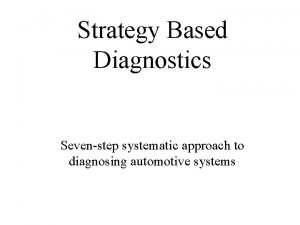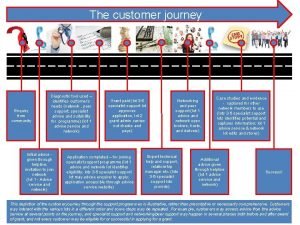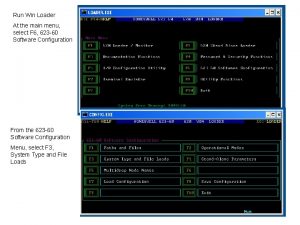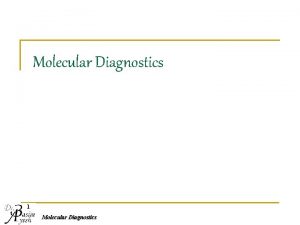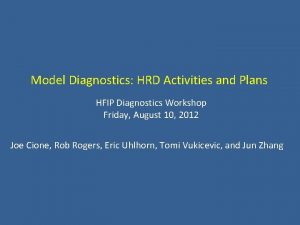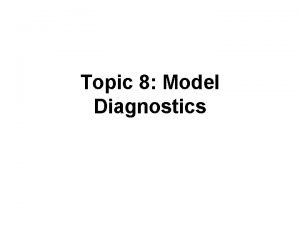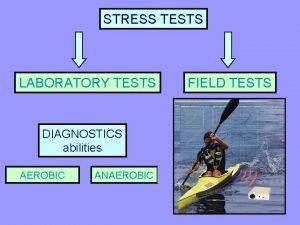Model Diagnostics and Tests Tests Among t 2









- Slides: 9

Model Diagnostics and Tests

Tests Among t ≥ 2 Population Variances • Hartley’s Fmax Test • Must have equal sample sizes (n 1 = … = nt) • Test based on assumption of normally distributed data • Uses special table for critical values • Levene’s Test • No assumptions regarding sample sizes/distributions • Uses F-distribution for the test • Bartlett’s Test • Can be used in general situations with grouped data • Test based on assumption of normally distributed data • Uses Chi-square distribution for the test

Hartley’s Fmax Test • H 0: s 12 = … = st 2 (homogeneous variances) • Ha: Population Variances are not all equal • Data: smax 2 is largest sample variance, smin 2 is smallest • Test Statistic: Fmax = smax 2/smin 2 • Rejection Region: Fmax F* (Values from class website, indexed by a (. 05, . 01), t (number of populations) and df 2 (n-1, where n is the individual sample sizes)

Levene’s Test • H 0: s 12 = … = st 2 (homogeneous variances) • Ha: Population Variances are not all equal • Data: For each group, obtain the following quantities:

Bartlett’s Test General Test that can be used in many settings with groups • H 0: s 12 = … = st 2 (homogeneous variances) • Ha: Population Variances are not all equal • MSE ≡ Pooled Variance

Welch’s Test – Unequal Variances

CRD with Non-Normal Data Kruskal-Wallis Test • Extension of Wilcoxon Rank-Sum Test to k > 2 Groups • Procedure: • Rank the observations across groups from smallest (1) to largest ( N = n 1+. . . +nk ), adjusting for ties • Compute the rank sums for each group: T 1, . . . , Tk. Note that T 1+. . . +Tk = N(N +1)/2

Kruskal-Wallis Test • H 0: The k population distributions are identical • HA: Not all k distributions are identical An adjustment to H is suggested when there are many ties in the data.

Nonparametric Comparisons • Based on results from Kruskal-Wallis Test • Makes use of the Rank-Sums for the t treatments • If K-W test is not significant, do not compare any pairs of treatments • Compute the t(t-1)/2 absolute mean differences • Makes use of the Studentized Range Table • For large-samples, conclude treatments are different if:



